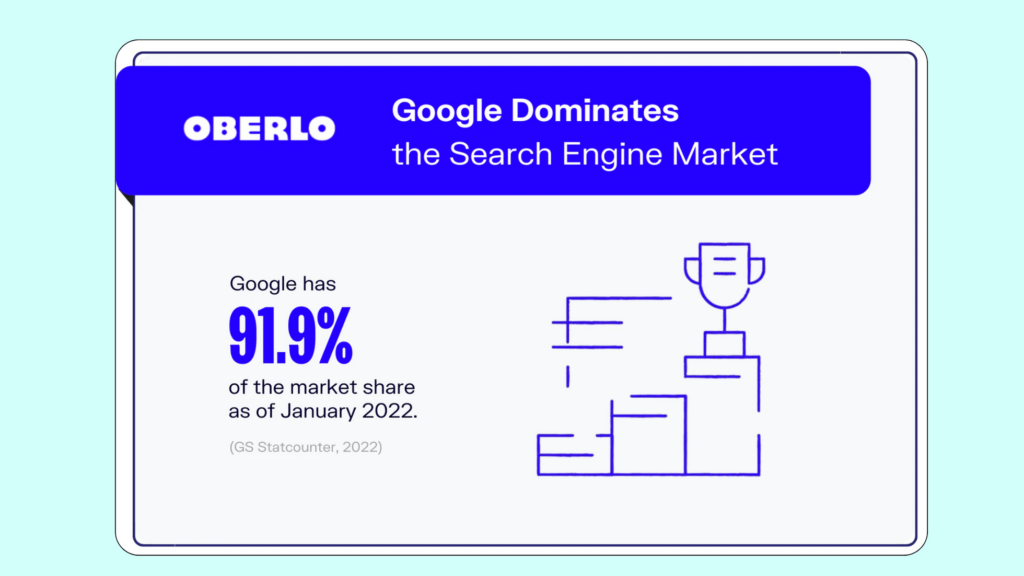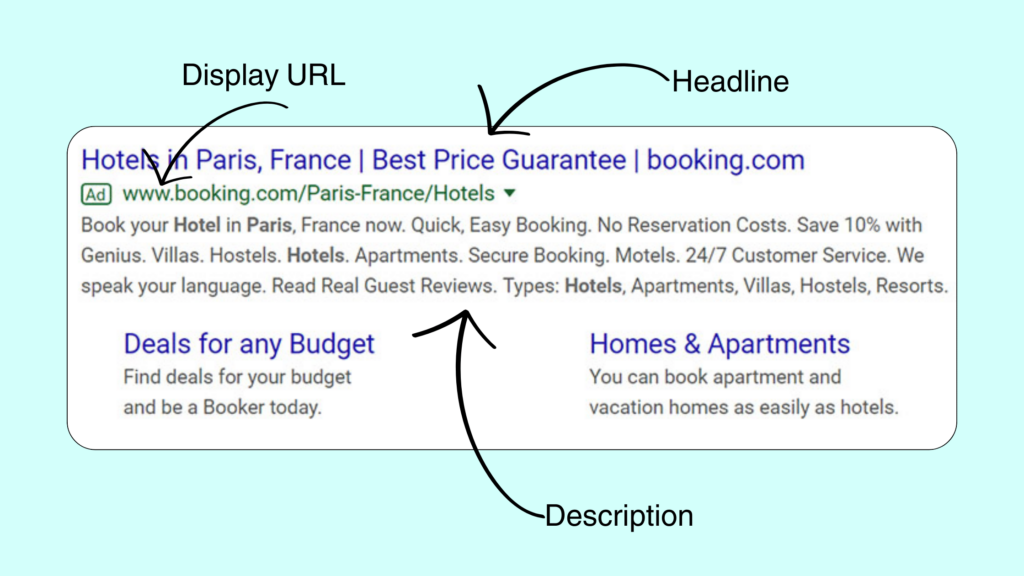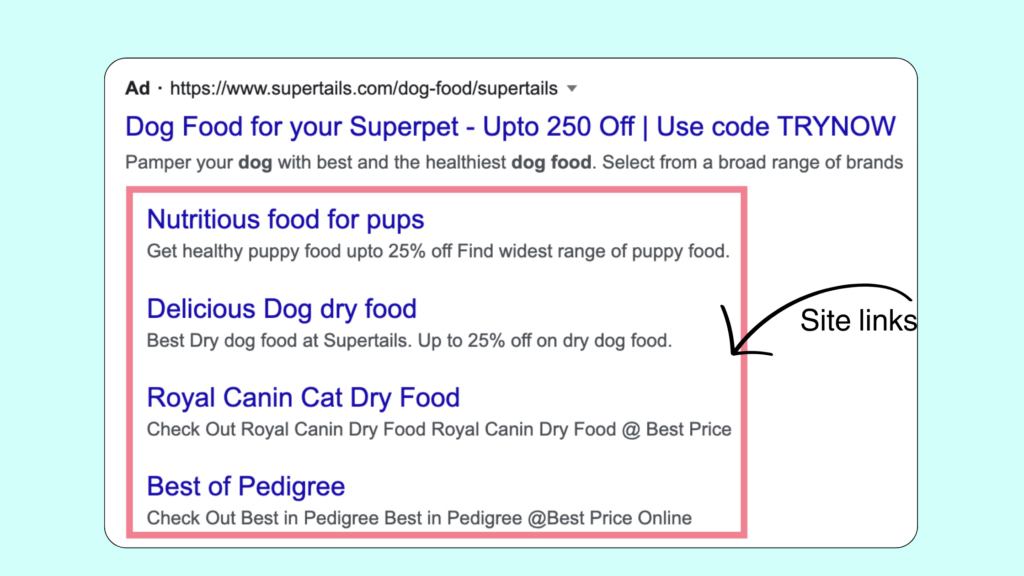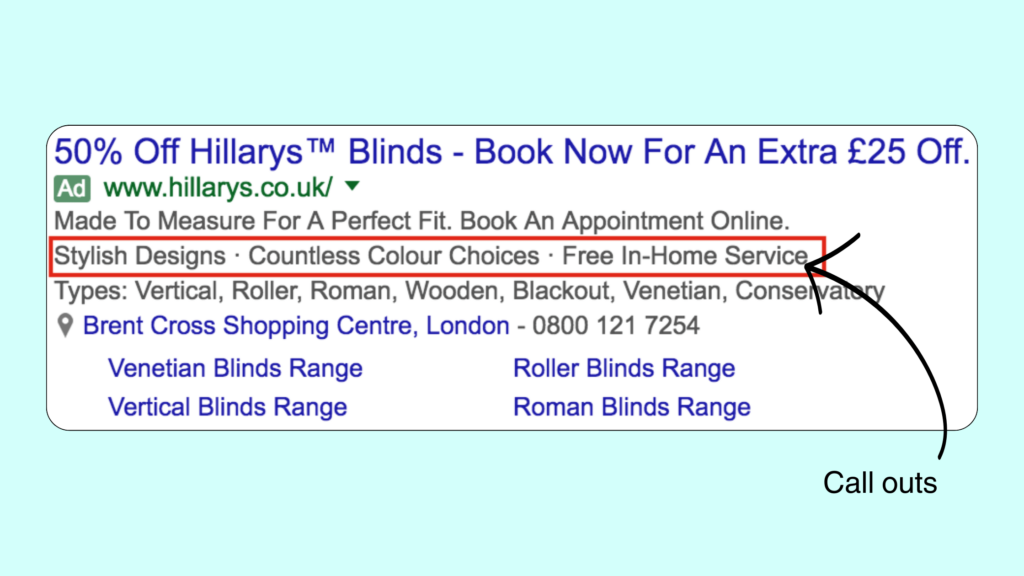Master Google Ads copywriting for impactful campaigns. Learn how to write effective Google ads.
With a 91.9% share of the search engine market (Source: GS Statcounter, 2022), Google has a dominant position as a search engine.

(Source:Oberlo)
Google extends beyond being a mere search engine, providing a diverse range of tools to empower businesses in the online realm. Notably, Google Ads is an online advertising platform that helps businesses to promote their products and services to a targeted audience.
Advertising on Google offers significant advantages for promoting your business. Google Ads allows for precise targeting, enabling you to tailor your advertising to specific demographics (age, gender), leverage users’ search history, and consider past interactions with your brand.
However, the challenge extends beyond merely placing your ads in front of people—it’s about compelling them to click. That is why persuasive and attention-grabbing Google Ads copy is essential.
This blog article explains how to write effective Google Ads Copy for your campaigns to drive clicks, boost conversions, and optimize ad effectiveness.
What is a Google Ad Copy?
Before learning how to write Google Ad copy, you need to understand what exactly it is.
A Google ad copy is the text and content created for advertisements displayed on Google’s advertising platform, Google Ads.
In simple terms, Google ad copy is the text that appears beneath the ad’s headline and provides information about a product, service, or offer.
This ad copy aims to attract attention, convey a message, and encourage users to take action, such as clicking on the ad to visit a website, purchase, or engage with a business. A good ad copy should be short, captivating, and tailored to the audience to encourage clicks and actions that lead to conversions.
A Google Ad copy has three parts: a Display URL, Headline text, and a description.

Headline:
The headline is the main title of your ad and is usually the first thing users see. The headline is the most noticeable part of your ad, so it is wise to include words that align with what people might have searched on Google.
Your text ad includes three headlines, each allowing up to 30 characters. These headlines are separated by a vertical pipe (“|”) and may display differently depending on the device used by the viewer.
Display URL:
The display URL is the web address displayed in the Google ad.
The display URL, typically appearing in green, shows your website address. Comprising the domain from your final URL and the text in the optional “Path” fields, this display URL aims to provide viewers with insight into the destination when they click the ad.
Description:
Suppose you’re advertising a travel booking website. In the description fields, you can spotlight specifics about your service. Include a “call to action,” which prompts the action you want the customer to take.
For instance, if your website helps people book flights and hotels, your description could feature phrases like “Book your dream trip now” or “Plan your getaway today.” These encourage users to take action, guiding them toward using your service to fulfill their travel needs.
How to write effective Google Ads copy that drive results | Best Practices
1.Use keywords that align with what users are actively searching for.
One important tip for writing effective Google Ads copy is to use keywords that align with what users are searching for. By mirroring phrases similar to their search queries, you signal to them that they found what they’re looking for. This method helps to establish relevance and capture their interest.
When creating Google Ads, it’s essential to understand that users often enter specific keywords or phrases into the search bar when looking for information, products, or services.
The advice to “use keywords that match what people are searching for” suggests tailoring your ad copy to include terms similar to those used by potential customers in their search queries.
For example, if someone is searching for “affordable running shoes,” a relevant Google Ad might include phrases like “budget-friendly running shoes” or “affordable athletic footwear.”
By aligning your ad copy with the language and terms commonly used by your target audience, you increase the likelihood that your ad will catch their attention and resonate with their search intent.
This approach improves the visibility of your ads and signals to users that your offering is directly related to what they’re looking for, creating a connection between their search and your ad content.
This alignment enhances the overall effectiveness of your Google Ads campaign, as users are more likely to click on ads that seem directly relevant to their needs or interests.
You can find several tools and strategies to find relevant keywords for your Google Ads campaign:
Google Keyword Planner: This tool, provided by Google Ads, allows you to discover new keywords related to your product or service. It provides insights into search volume, competition, and bid estimates.
Google Search Console: This tool can show you the actual search terms that people are using to find your website. It helps you understand how users are currently discovering your content.
Competitor Analysis: Analyzing the websites of your competitors can give you insights into the keywords they are targeting. While you shouldn’t copy their strategy directly, it can inspire relevant terms.
2.Use assets (formerly “ad extensions”)
Assets, previously known as ad extensions, are additional functionalities that can be included with your Google ad. They provide extra opportunities to influence potential customers through additional copy and information.
There are various types of assets available, each serving a specific purpose. While not delving into the details of every type, some that are generally beneficial for almost any business include site links, callouts, and structured snippets.
Sitelinks: These are additional links that appear below your ad, directing users to specific pages on your website. They enhance the user experience by offering direct access to relevant content.

Callouts: Callouts are brief, persuasive phrases that highlight key features or benefits of your product or service. They are displayed below your ad and can be used to emphasize what sets your business apart.

Structured Snippets: These provide more context about your products or services by showcasing specific aspects or categories. Structured snippets appear as headers with a list of values, offering additional information to users.
3.Generate multiple variations of your ad
The initial draft of your ad might not always be the most effective. You need to create several versions of your ad to optimize your Google ad campaign.
In each ad, highlight the value of your product or service. Communicate to your audience why they need your products and how they can enhance their lives. Emphasizing the positive outcomes of choosing your product or service is always beneficial.
When launching your ad campaign, experiment with diverse ad styles. This experimentation helps determine the ad type that resonates most with your audience.
4.Use power words in your ad copy
When writing ad copy for your PPC ad, it is not just about putting words together. The goal isn’t to deliver bland content that fails to captivate your audience. Add powerful words that make your ad copy intriguing to your audience.
Powerful words can draw your audience in and make them actively engage with your content. Among these, the most impactful word is “you.” “You” holds significant power in grabbing your audience’s attention and involving them in your message.
Using “you” directs the focus towards your audience. It speaks directly to them, addressing their needs and concerns. For instance, a headline asking, “Are you tired of your leaky faucet?” is more engaging than one stating, “We’re experts at fixing leaky faucets.”
Here are some examples of power words that you can consider incorporating into your ad copy to make it more compelling:
- Discover: Invites curiosity and a sense of exploration.
- Exclusive: This creates a feeling of uniqueness and special access.
- Revolutionary: Suggests innovation and groundbreaking solutions.
- Guaranteed: Instills confidence and assurance in the product or service.
- Unleash: Implies a release of potential or hidden benefits.
- Transform: Indicates a significant positive change or improvement.
- Proven: Establishes credibility and reliability.
- Sensational: Evokes excitement and intense interest.
- Instant: Suggests immediate results or gratification.
- Essential: Highlights importance and necessity.
- Free: Attracts attention by offering something without cost.
Carefully choose words that complement your brand, product, or service and evoke the desired emotional response from your audience.
5. Address the emotions of your target audience

Emotions have a powerful influence on decision-making and behavior. When your ad evokes emotions, it can create a connection with the viewer and increase the likelihood of them taking a desired action.
For example,
Anger: An ad that addresses a common frustration or problem can spark a sense of anger, encouraging viewers to take action to address the issue.
Suppose you’re advertising a time-saving app, and your ad highlights the common frustration of wasting time on boring tasks. The emotion of anger towards inefficiency can drive users to explore your solution for a more efficient lifestyle.
Fear: Fear can be a strong motivator for action. Ads that highlight potential risks or issues and suggest a solution can encourage users to engage further.
Imagine you’re promoting a security software product. By highlighting the potential risks of online threats and the importance of protecting personal information, you can infuse a sense of fear that motivates users to consider your product for enhanced security.
Disgust: Addressing something undesirable or unpleasant and offering a solution can evoke a sense of disgust, driving users to seek a resolution.
Let’s say you’re advertising a cleaning service. Addressing the unpleasantness of a dirty or cluttered living space and offering a solution can evoke a sense of disgust, prompting users to seek the cleanliness and order your service provides.
Happiness: Positive emotions, such as joy or happiness, can be powerful motivators. Ads that convey a sense of joy associated with your product or service can encourage engagement.
Consider an ad for a travel agency. By showcasing joyful experiences and memorable vacations, you can evoke positive emotions of happiness and excitement, encouraging users to explore your travel packages for their next adventure.
By understanding and tapping into these emotions, you can create ad copy that resonates with your audience on a deeper level. However, it’s crucial to use emotional appeal ethically and align it with your brand and messaging.
6.Avoid generic sales language in your Google ads.
The advice to avoid generic sales language in Google ads stems from the idea that users like to engage with ads that offer specific benefits and create a genuine sense of urgency.
Generic sales phrases like “call us today,” without providing a clear benefit to the user, may not resonate well.
Instead of using generic language, focus on highlighting specific benefits that your product or service offers. Users are more likely to respond to ads that address their needs or problems directly.
If your ads include time-sensitive offers or promotions, try to convey urgency. However, avoid creating a false sense of urgency without providing a clear reason. For example, rather than saying “Call us today,” specify why it’s advantageous for the user to take immediate action.
Generic calls to action such as “sign up today” or “book today” may lead to decreased engagement. Instead, try to make your calls to action more specific and tailored to the user’s needs or interests. For example, “Book your diet plan today” or “Sign up for a limited free consultation”
If your ad includes time-sensitive elements, explain why there is urgency. For instance, use phrases like “sale ends in 20 hours” and incorporate a countdown timer to visually emphasize the limited time available. This makes the urgency more tangible and compelling for the user.
In summary, the goal is to make your Google ads more appealing by focusing on specific benefits, creating genuine urgency with clear reasons, avoiding generic calls to action, and making the urgency earned and valued by the users.
7.Ensure that your landing page stays relevant
Ensure that your ad and landing page content are in sync. As an example, let’s say you sell eco-friendly yoga mats.
If you’re promoting eco-friendly yoga mats for comfort and sustainability in your Google ad, make sure the landing page reflects the same message. When people click on your ad, they expect to find those specific eco-friendly mats showcased.
The theme, wording, and visuals on your landing page should all echo the idea of comfort and sustainability.
If your landing page turns off into a general display of fitness products or discusses a different line of yoga mats, it raises confusion. This mismatch might lead visitors to leave your site with disappointment.
Consistency is the key to a smooth and satisfying user experience, so keep your message aligned across all touchpoints.
8.Enhance Your Display URL for Better Performance.
Improving your display URL can positively impact your click-through rate (CTR). While not directly clickable, this element provides potential customers with an indication of where they will land upon clicking the ad.
Use this opportunity to reinforce your message or brand identity, and include relevant keywords in the path.
For instance, if a pet food business is targeting the keyword ‘dog food,’ their display URL could be crafted as ‘www.example.com/Dog-Food.’ This not only assures users that they will be directed to a page specifically dedicated to dog food but also aligns with their search intent.
Let DigiFix enhance your Google Ads for more captivating campaigns!
Crafting engaging ad content is crucial for attracting clicks and driving interest in your business. With over 7 years of experience in creating impactful Google Ads, DigiFix is your full-service digital marketing partner specializing in PPC campaigns.
Our team of experts is dedicated to leveraging their knowledge and expertise to optimize your campaign, ensuring it effectively generates more leads for your business.
So, if you are looking for a reliable partner to manage your Google Ads, we are here for you. Contact us for a Free consultation.
Do you want more traffic?
—————
Hi, we are an Australian digital agency doing groundbreaking work to help a business like yours reach its full potential. My only question is will you qualify for our services?
Do you want more traffic?
—————
Hi, we are an Australian digital agency doing groundbreaking work to help a business like yours reach its full potential. My only question is will you qualify for our services?


 Hi, we are an Australian digital agency doing groundbreaking work to help a business like yours reach its full potential. My only question is will you qualify for our services?
Hi, we are an Australian digital agency doing groundbreaking work to help a business like yours reach its full potential. My only question is will you qualify for our services?